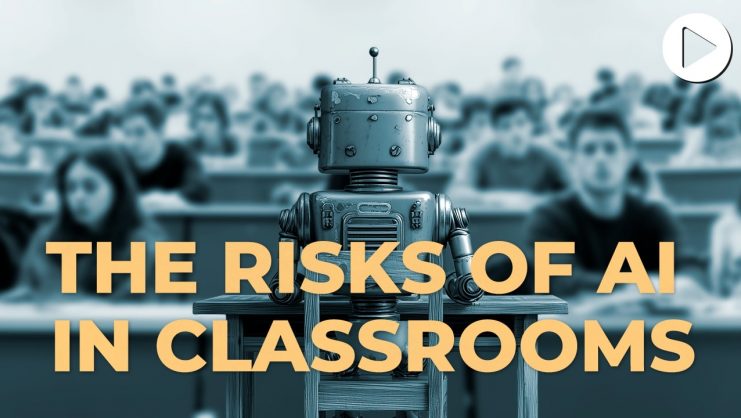In 2005, the UN Global Compact published a report, with the IFC and the Swiss Government, with the aim to integrate environmental, social, and governance factors into capital markets. In fact, “Who Cares Wins” was the first mention of the “ESG” term that has become so ubiquitous in business today. The next ten years (2005-2014) were declared by UNESCO to be the Decade of Education for Sustainable Development – and at the start of this decade, researchers Bjarne Bruun Jensen and Karsten Schnack suggested that the education for sustainable development (ESD) should provide the young people the competence to decide and act for sustainable development.
Since then, ESG has been embedded in curricula at the elementary and secondary levels of almost every school in most countries. It is also an essential part of the curriculum of any business school worth its name today. The Financial Times, to that point, recently introduced the annual “Responsible Business Education Awards,” a special section that considers how business schools are contributing to a “fairer, greener world” with new courses and teaching methods.
This has all been admirable and necessary progress. But the question remains: is it making an actual impact on students? Daniel Olsson, a researcher at Karlstad University, conducted a study on the implementation of ESD and its impact on students’ sustainability consciousness. The work compared the mindset of students in Sweden attending upper secondary schools with an ESD profile to those of schools without. Olsson’s work also looks at how “The Keep Sweden Tidy Foundation” administrates the international eco-school certification – in Sweden, secondary schools are required to submit action plans and reports to keep their certification (or apply to become ESD schools.) In addition, the research considers similar practices around the world including how the Ministry of Education of Taiwan promotes and funds the Green School Partnership Project certification, as part of its ESD strategy.
Olsson’s results indicated that, yes, ESD schools do have some impact on students’ sustainability understanding and consciousness. However, those effects were relatively small. While, perhaps disappointing, the results are important to take in because if we are to truly make a difference in student learning in regards to sustainability – and to the future of business and ultimately the planet – we must know from where and how to move forward as practitioners and policymakers.
As students move through higher education and into their career journey, the learning that is focused on ESG begins to weaken.
After going through an ESD secondary education, or any sustainability-focused education for that matter, does the behavior of students change once they leave the classroom? What happens when they graduate from university, enter the workforce, join executive ranks, or get a seat on the Board? What has been shown is that despite the (often mandatory) environment curriculum in early education, students’ behaviors and attitudes become less environment-friendly as they enter adolescence – at which point they do not display pro-environmental behavior in their consumption patterns. One cause for this is that, as students move through higher education and into their career journey, the learning that is focused on ESG begins to weaken. This subsequently – and obviously – takes a toll on the pro-environment concerns and managerial decision-making. Life-long education is key here, as it is in many aspects of our lives.
I would like to propose a framework built on Benjamin Schenider’s ASA framework (Attraction–Selection–Attrition), which determines what kind of people get attracted to, identify with, and stay on with an organization for longer than others. The ASIIC framework (Attraction-Selection-Immersion & Integration-Continuation) could prolong future managers’ engagement and learning about the environment and sustainability processes and in this way impact their behavior. The ASIIC framework process is explained below.
Attraction through a sustainability brand and culture: Business schools could create a brand image catered around sustainability, for example by including environment protection and sustainability among their core values. In addition, a student role of ChImPo (Chief Impact Officer) could be created to help lead the process from the student side. Furthermore, accreditation agencies could allocate higher points on the evaluation criteria based on a sustainability measurement index in order to encourage schools to continue their efforts in attracting students inclined towards sustainability.
Selection: When students apply to those business schools with a focus on sustainability, the application process could include the candidate writing a “statement of purpose” that explains their reasons behind applying to a school with a focus on sustainability. Their having done some work in sustainability in high school or college could be a pre-qualifier. In this regard, faculty members could be screened in much the same way as student candidates.
Integration and Immersion: Business schools, along with students, must take a leadership role in identifying the practices and processes that work best for their immediate communities, particularly those that lead to corrective actions regarding carbon footprint – for example with audits and ongoing measurements. It would be helpful to have students welcomed as part of this internal process and have it coincide with their curriculum and evaluation. Students should be made active stakeholders as they internalize by being part of the process.
Collaboration and Continuation: It is important for schools to collaborate with the stakeholders of peer schools in the region, as well as corporations, NGOs, and government bodies in a collective manner towards a more sustainable future. In this manner, business schools do not compete with one another but combine forces to make the most tangible impact possible.
While serving as UN Secretary-General, Ban Ki-moon remarked “We are the first generation that can end poverty, and the last that can end climate change.” That was in 2015, close to 10 years ago. The years are passing, and we must take his words very seriously before it is too late. Instead of keeping ESG as a checkbox course in higher education curriculum, it must become an integral part of the student journey. It is particularly essential for Business School students that this journey continues even after they graduate with their business degree so that they can make managerial decisions that affect a large number of people and subsequently the planet (the only one we have!) accordingly – whether they take positions in public, private, or government institutions.
© IE Insights.











